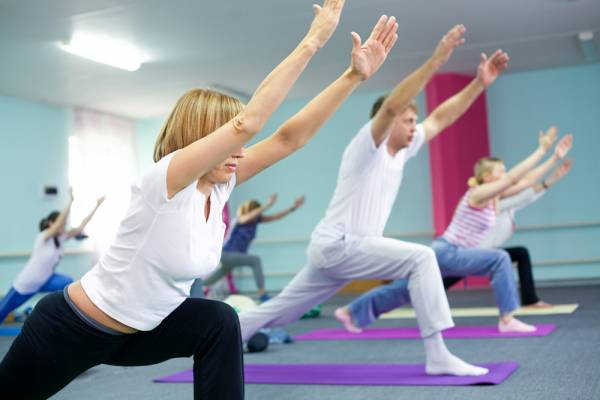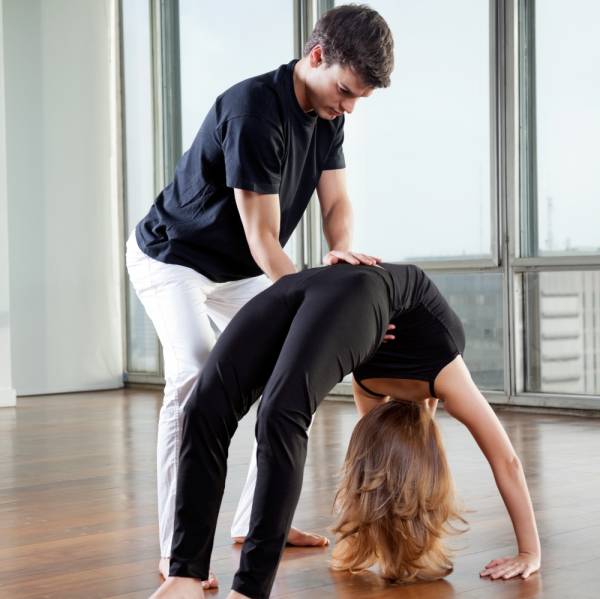Honor your body’s limits and it will follow your instructions. I like to exercise the notion that prevention is better than a cure, as well as the idea that yoga should be practiced with a mindful observation for the limits of our bodies.
In a yoga class, the quality of your poses matter more than the amount of poses you go through. And by learning how to honor the poses and our bodies, we can prevent needless injuries.
All Bodies Are Different
Yoga postures have often been thought of as a form of exercise. But from an ancient perspective, they are not merely exercises, but techniques that place the physical body in positions that cultivate awareness, relaxation, concentration, and meditation.
But for most of us, the typical yoga class experience goes something like this:
- You arrive on the mat and perform a certain pose because the instructor says so and your neighbor seems to be doing it pretty well (at least in your eyes).
- You realize you aren’t able to go as far in a pose because you’re experiencing some discomfort.
- You don’t want to look like a wimp because you think the whole class might be looking to see how far you have gotten in your pose so you push too far. (Everyone else is thinking everyone is looking at them, too, by the way).
The truth is, no one is looking at you. Yoga isn’t a team effort so the whole class need not synchronize. It’s an individual effort to see what your body can perform that day. How you approach and perform each pose will be the benefit you get from each class. This can be done by paying attention to the instructor and the cues he or she is giving.
“Yoga isn’t a team effort so the whole class need not synchronize. It’s an individual effort to see what your body can perform that day.”
It’s important to keep the competitive mind and ego by the door and work with what your body can do. We can appreciate a beautiful yoga photo, but that doesn’t mean we need to recreate that shot with our own bodies. We must all remember there is a balance. Even after years of dedication and practice, some poses may never be right for my body, and I doubt that all poses will be right for you as well. The acceptance of this simple fact can be our motivation to respect that all bodies are different.
The Dangers of Overstretching
Most often, the causes of injuries in yoga are overuse and overstretching. Overstretching is the reason many people do yoga one day and don’t show back up on the mat the next. It’s not that they don’t want to. It’s that they can’t because they overdid the stretch at the last session and are probably in pain.

One of yoga’s great gifts is the increased ability to understand and listen to our own body. But this awareness takes time and can be clouded by the encouragements of teachers and other students who may not realize when we are overreaching. To avoid injury, your body may compensate by using a weaker muscle to get into a certain pose. Over time, this will lead to misalignment or injury.
When a muscle is being lengthened, it’s not just the muscle cells stretching out, but also the surrounding connective tissues. When we say we’re stretching a muscle, the actual stretch comes from these connective tissues. When too much of a stretch happens, the tissues will lose elasticity and become less functional. This means it will not return to its original shape once it is overstretched. Over time, this will lead to muscle weakness.
“Our bodies are built uniquely.Therefore, work with where you are, not from where you think you should be.”
Connective tissues have good blood circulation that can facilitate recovery, but when we continually overstretch, the soft tissues surrounding the muscle, including tendons and ligaments, become susceptible to developing micro tears. If we don’t change our practice, these micro tears will lead to larger tears and eventually to injuries. Regardless of whether our bodies are tight or flexible, during yoga practice, it is easy to go beyond our means and take a stretch to a level that may develop these kinds of tears without notice.
Our bodies are built uniquely. Therefore, work with where you are, not from where you think you should be. The American Academy of Orthopedic Surgeons believes the rewards of yoga outweigh the possible physical risks, as long as you perform with care, moderation and according to your individual flexibility level.
Tips to Prevent Yoga Injuries
- Discuss any known illness or injury with your instructor prior to class so he or she can recommend modifications. Serious muscle damage and injuries can result if proper precautions are not taken, especially for people with preexisting musculoskeletal conditions.
- There is no such thing as a perfect yoga pose. Be patient and gradually build to the pose that best suits your best ability.
- Learn how to practice yoga poses with correct alignment – not by looking at your neighbor but by listening to the instructor. Some teachers might make adjustments, but if they don’t, feel free to approach them after class to ask about how to improve certain poses.
- Invest in a private session or two. You can polish your yoga practice, learn your strengths and weaknesses, get feedback, and work on challenging poses.
- Use props as a modification for poses where there is tightness. They will help you to feel the pose better in order to engage the correct muscles.
- Select a class level appropriate for you and where you are in your practice.

Summary
In addition to every body being different, also remember that every day is different. On any given day, our bodies might not be able to move in the same way we did yesterday or a week ago. Pay attention to how your body feels each day and do not go beyond your limits. Be mindful.
You Might Also Enjoy:
- 10 Essential Postures for Strength Athletes
- 6 Tips For an Injury Free Yoga Class
- Your Yoga Crystal Ball: Stop Injuries Before They Happen
- What’s New On Pulse Beat Fit Today
References:
1. American Academy of Orthopedic Surgeons. “Yoga Injury prevention.” Orthoinfo.aaos.org. March 2012.
Photos courtesy ofShutterstock.






